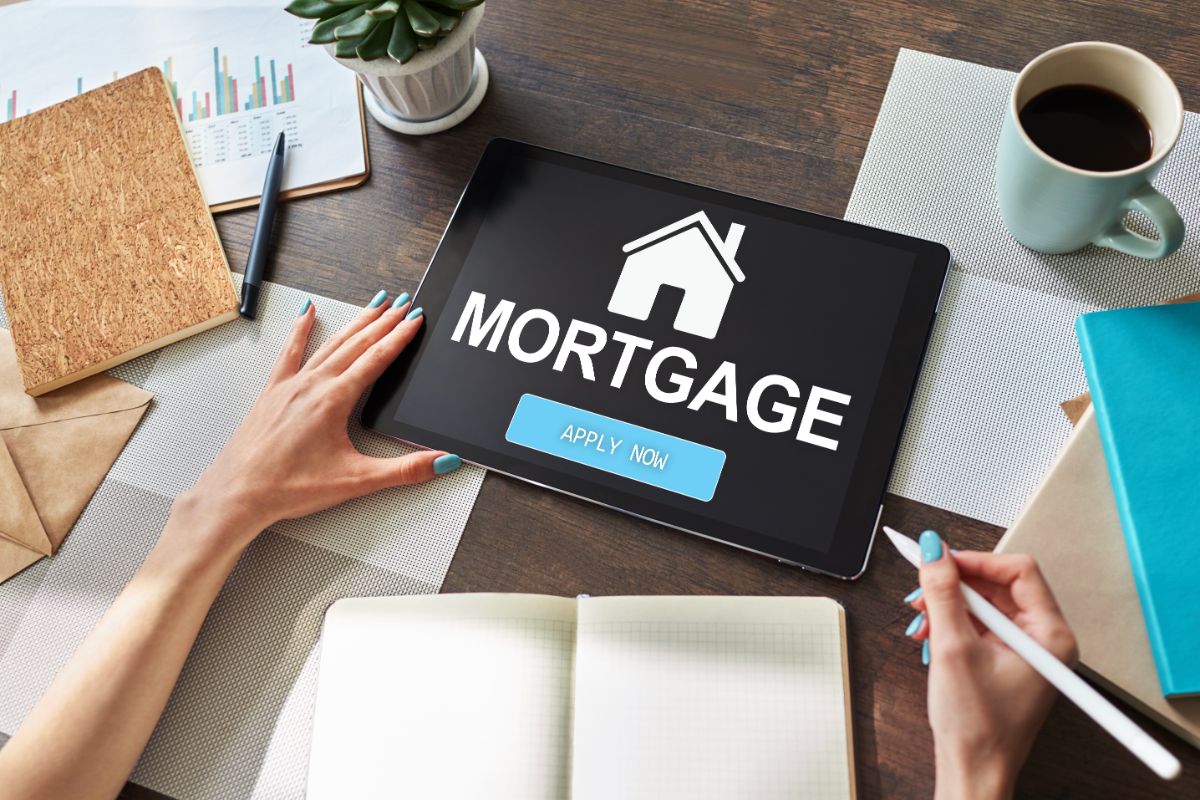This home financing primer was prepared in cooperation with the Mortgage Bankers Association of America and published by the Federal Trade Commission. At the end is a link to a list of nationwide log home lenders who specialize in log home loans.

If you are thinking about buying a log home, especially your first one, you may have some basic questions about the cabin financing process. This home mortgage primer covers the basics.
Fast Facts
These fast facts are from the Bureau of Consumer Protection - Office of Consumer and Business Education and summarize the starting point of all home financing.
- Lenders usually expect you to make a down payment of between 10 and 20 percent of the house's price and to pay closing costs, often three to six percent of the loan amount.
- There are two major types of mortgage loans -- those with fixed interest rates and monthly payments and those with changing rates and payments. However, there are many variations of these plans on the market, and you should shop carefully for the mortgage that best suits your needs.
- Probably the single most important factor to look for when shopping for a home mortgage is the annual percentage rate. The APR includes all the costs of credit, including such items as interest, "points," and mortgage insurance.
- Vermillion, Dale (Author)
- English (Publication Language)
- 240 Pages - 01/01/2009 (Publication Date) - Northfield Publishing (Publisher)
Navigating the Mortgage Maze: The Simple Truth About Financing Your Home
How large a mortgage will you be able to get?
A general rule is that you usually can qualify for a mortgage loan of two to two and one-half times your household's income. For example, if your family has an income of $30,000 a year, you can usually qualify for a mortgage of $60,000 to $75,000.
Lenders use many other factors to determine how large a mortgage they will give you. For example, lenders generally prefer that your housing expenses (including mortgage payments, insurance, taxes, and special assessments) not exceed 25 to 28 percent of your gross monthly income. Other long-term debt (monthly payments extending more than 10 months) added to your housing expenses should not exceed 33 to 36 percent of your gross monthly income. Federal Housing Administration (FHA) and Department of Veteran Affairs (VA) mortgage loan percentages may vary.
In addition, lenders want to know about your employment and credit history. This includes finding out about your job and income and how well you handled and repaid loans in the past.
Legal safeguards exist to ensure this information is used fairly. For example, the Fair Credit Reporting Act states that home financing lenders must certify to the credit bureau the purpose for which this information is sought and that it will be used for no other purpose.
The Equal Credit Opportunity Act prohibits discrimination in lending based on sex, marital status, race, national origin, religion, age, or because someone receives public assistance.
How much money will you need for a down payment and closing costs?
Lenders usually expect you to be able to make a down payment of between 10 and 20 percent of the house's price and to pay closing costs, often three to six percent of the loan amount.
If you make a down payment of as little as five percent but less than 20 percent, the lender will require you to pay for private mortgage insurance. (Requirements for VA or FHA loans may differ.) Under the federal Real Estate Settlement Procedures Act, the lender must provide you with information on known and estimated closing costs.
How do you shop for home financing or mortgage loans?
Mortgage packages for home financing vary widely, and it is important to investigate several options to find the one best for you. If, for example, you are using a real estate agent or broker to shop for a home, you may want to consider their suggestions about lenders and mortgage packages.
- Check real estate or business newspaper sections, which may include brief tables on mortgage availability.
- Look in the Yellow Pages under "Mortgages" for a list of mortgage lenders in your area.
- Call several lenders for rates and terms on the type of mortgage you want.
- Consider trying a commercial "computerized mortgage shopping service," although such a list may reflect only a selection of lenders and you may be charged a fee.
- Compare the mortgages offered by several lenders before you apply for a loan. Most home financing lenders require you to pay a fee when you file your loan application. The amount of this fee varies, but it can be $100 to $300.
Some lenders do not refund this fee if you are not approved for the loan, or if you decide not to accept the loan terms offered. Before you apply, ask the lender whether they charge an application fee, how much it is, and under what circumstances and to what extent it is refundable.
What kind of mortgage should you select?
There are two major types of mortgage loans -- those with fixed interest rates and monthly payments and those with changing rates and payments. However, there are many variations of these plans on the market, and you should shop carefully for the mortgage that best suits your needs.
Common fixed-rate mortgages include 30-year, 15-year, and bi-weekly mortgages.
- The 30-year mortgage usually offers the lowest monthly payments of fixed-rate loans, with a fixed monthly payment schedule.
- The 15-year fixed-rate mortgage enables you to own your home in half the time and for less than half the total interest costs of a 30-year loan. These home financing loans, however, often require higher monthly payments.
- The bi-weekly mortgage shortens the loan term from 30 years to 18 to 19 years by requiring a payment for half the monthly amount every two weeks. While you pay about 8 percent more a year towards the loan's principal than you would with the 30-year, one-payment-per-month loan, you pay substantially less interest over the life of the loan. Keep in mind, however, that with shorter-term loans, you trade lower total costs for smaller mortgage interest deductions on your income tax.
Mortgages with changing interest rates and/or monthly payments exist in many forms. The adjustable rate mortgage (ARM) is probably the most common, and there are many types of ARM loans available.
The ARM usually offers interest rates and monthly payments that are initially lower than fixed-rate mortgages. But these rates and payments can fluctuate, often annually, according to changes in a pre-determined "index" -- commonly the rate of return on U.S. Government Treasury bills.
Some adjustable loans, for a fee, contain a provision permitting you to convert later to a fixed-rate loan. Another type of mortgage loan carries a fixed-interest rate for a number of years, often seven, before adjusting to a new interest rate for the remainder of the loan.
A "buydown" or "discounted mortgage" is another type of loan with an initially reduced interest rate which increases to a higher fixed rate or to an adjustable rate usually within one to three years. For example, in a "lender buydown," the lender offers lower monthly payments during the first few years of the loan.
What features should you compare with different mortgage loan packages?
Probably the single most important factor to look for when shopping for home financing or a home mortgage is the annual percentage rate, or the "APR."
The APR includes all the costs of credit, including such items as interest, "points" (fees often charged when a mortgage is closed), and mortgage insurance (when included in the loan).
Lenders must disclose the APR under the Truth in Lending Act. The lower the APR, generally the lower the cost of your loan. Advertisements that state other rates such as "simple" interest rates, do not include all the costs of the loan.
If you shop for a mortgage loan with interest rates or payments that change, be sure to compare:
- initial interest rates;
- the "cap" -- or how much the interest rate can increase/decrease over the life of the loan, and how much the rate can change at each adjustment;
- how often the interest rate can change;
- how much and how often the monthly payments and term of the loan can change;
- what index is used to determine the rate changes;
- what "margin" is used -- or how much additional a lender can add to the adjusted interest rate;
- the limits, if any, on "negative amortization" -- the loss of equity in your home when low monthly payments do not cover fully the interest rate charges agreed upon in the mortgage contract;
- any "balloon" payments -- a large payment at the end of your loan term, often after a series of low monthly payments.
This home financing primer covers many of the basic facts of log home mortgage loans. You can check out more mortgage money-saving tips and other ways to save money on your log home mortgage. Check out our list of nationwide log home lenders who specialize in log home loans.
More Cabin Financing Pages:
List of Log Home Lenders This nationwide list of log home lenders can help you find somebody experienced with log cabin construction loans.
Financing Your Log Cabin Renovations: A Guide Understand your options by following our guide to financing your log cabin renovations.
Financing land: A Complex Transaction Financing land can be complex. You need to know your options and consider some important factors.
Personal Capital - Free Investment Checkup and Retirement Planner Personal Capital offers a free investment checkup tool and retirement planning.
Understanding the Cabin Mortgage Loan Process When lining up a mortgage loan package for your log home it’s important that you shop around and find the one that best suits your financial needs overall.



[…] READ MORE … […]